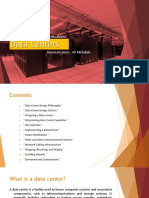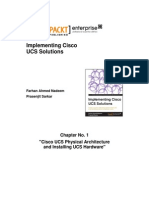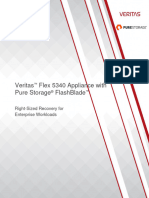0% found this document useful (0 votes)
117 views18 pagesData Center Standardization and Modularity
The document discusses the concepts of standardization and modularity in data center design, outlining the configuration, standards, benefits, and challenges associated with these approaches. It details the infrastructure components of data centers, including computing, storage, and network resources, as well as the importance of adhering to established standards for reliability and efficiency. Additionally, it emphasizes the need to balance standardization and modularity to optimize data center performance while accommodating future technological advancements.
Uploaded by
22054400Copyright
© © All Rights Reserved
We take content rights seriously. If you suspect this is your content, claim it here.
Available Formats
Download as PDF, TXT or read online on Scribd
0% found this document useful (0 votes)
117 views18 pagesData Center Standardization and Modularity
The document discusses the concepts of standardization and modularity in data center design, outlining the configuration, standards, benefits, and challenges associated with these approaches. It details the infrastructure components of data centers, including computing, storage, and network resources, as well as the importance of adhering to established standards for reliability and efficiency. Additionally, it emphasizes the need to balance standardization and modularity to optimize data center performance while accommodating future technological advancements.
Uploaded by
22054400Copyright
© © All Rights Reserved
We take content rights seriously. If you suspect this is your content, claim it here.
Available Formats
Download as PDF, TXT or read online on Scribd
/ 18

























































































